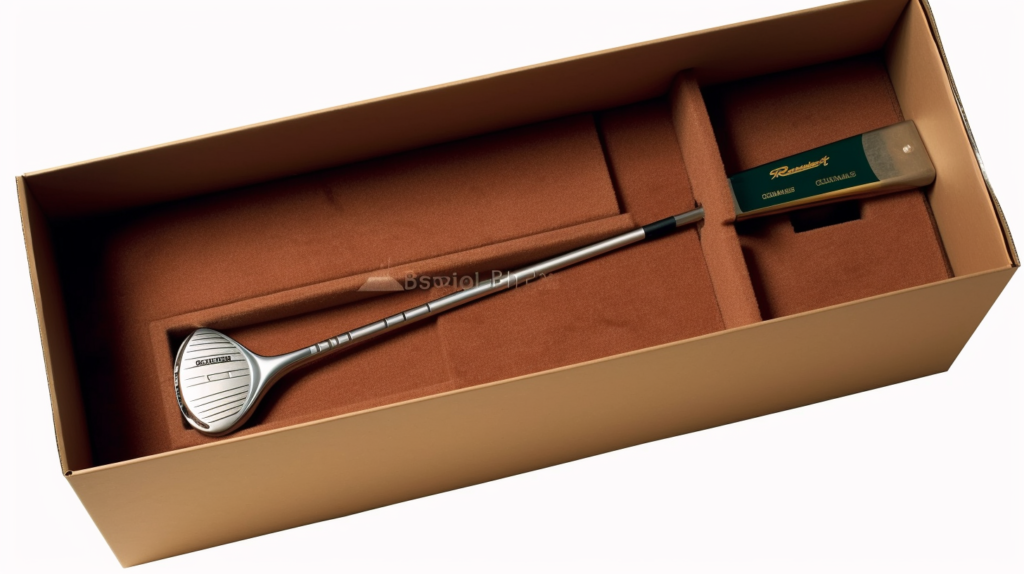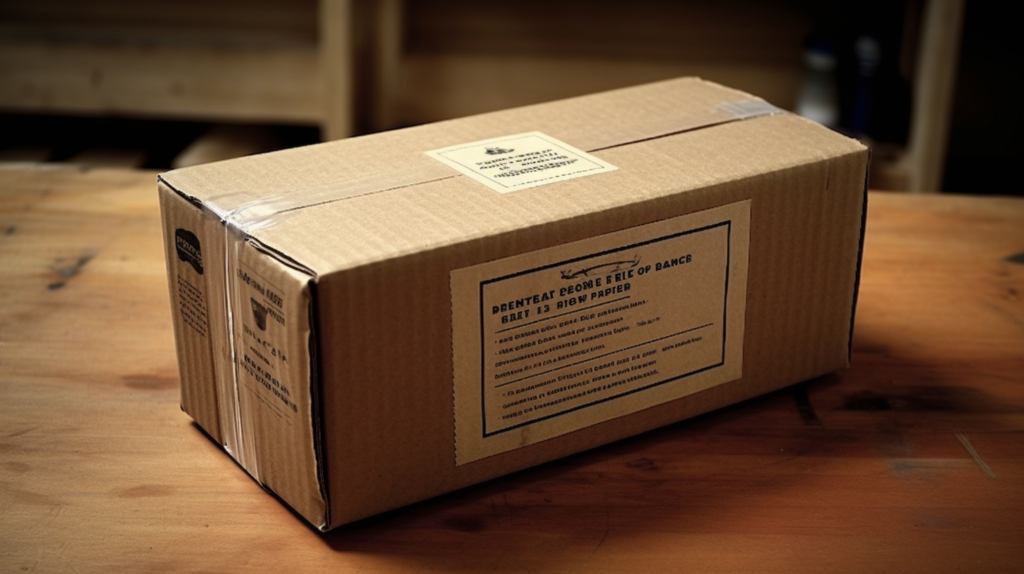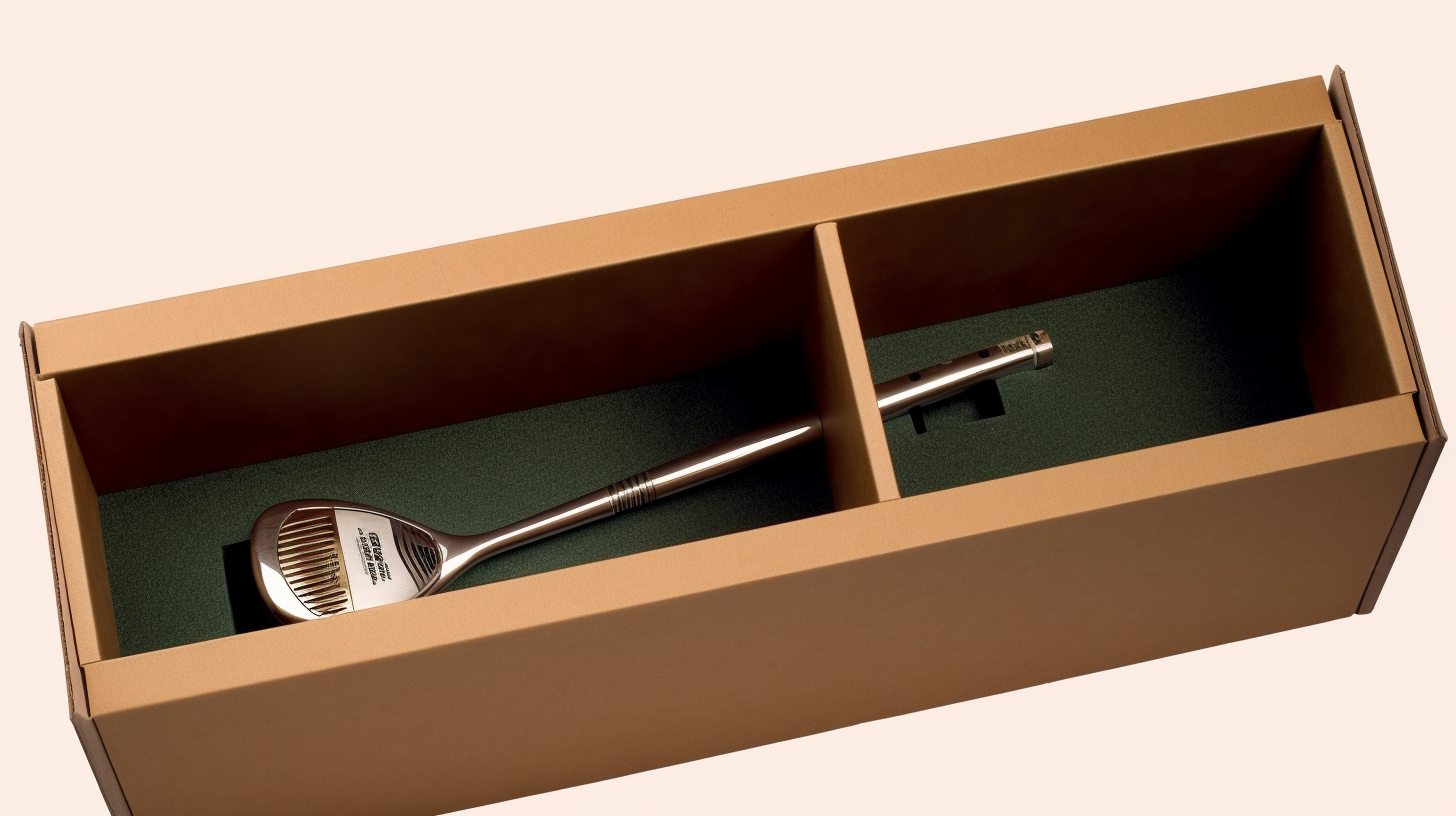Has your golf buddy moved across the country or landed a new job overseas?
Do you need to return clubs to an online retailer for exchange or credit? At some point most golfers require shipping their full bag or select clubs from one location to another.
While entrusting your precious sticks to freight carriers may incite anxiety, adhering to strategic preparation, packing, shipping and tracking best practices ensures safe passage.
Let’s dive into a complete guide for shipping golf clubs including step-by-step recommendations that cover boxing, protection methods, carrier selection, labeling, delivery confirmation and more.
Mastering these shipping logistics processes helps every club arrive intact.
Prepare the Golf Clubs for Shipping

Before placing your golf clubs in a shipping box, it is important to take some time to clean and protect them so they arrive safely at their destination.
Start by using a towel or brush to wipe off any dirt, grass clippings, or debris that may have collected on the heads and shafts of your woods, irons, and putter.
Pay special attention to the grooves on the irons and wedges to remove any soil, sand or grass that could have become impacted. Using a non-abrasive golf club cleaner and a soft bristle brush, gently scrub each club head until all residues have been eliminated.
Rinse thoroughly afterward and wipe dry with a clean towel.
Once clean, all woods, hybrids and specialty wedges in the set should be covered with headcovers to provide some padding and prevent scratching during shipping.
For drivers and fairway woods, make sure to use properly fitting headcovers that snap or pull closed underneath the club head. Stock headcovers often fit loosely and could slip off in transit if jostled around.
Check that each headcover is securely in place before moving onto wrapping the grips.
To provide further protection, carefully wrap all grips on the golf clubs with 1 or 2 layers of small bubble cushioning or foam. This helps shield the grips from accidental scuffing or tearing against the inside walls of the cardboard shipping box.
Start at the top of each grip underneath the shaft and wrap downwards towards the butt end, ensuring complete coverage without obstructing the headcovers at the tops of the shafts. Secure the bubble wrap in place with a piece of strong tape.
Avoid using too much tape directly on the grips as it could leave behind a sticky residue. Once wrapped and taped, the clubheads and grips are properly prepared for the packaging and shipping process.
Boxing Options for Shipping Golf Clubs

There are a few good options when it comes to selecting an appropriate box for shipping your golf clubs.
Prevent them shifting against one another
No matter which cardboard shipping box option is selected, it is crucial that the club heads, shafts and grips all have enough interior clearance and are surrounded with ample packing material to cushion and immobilize them during transportation.
In addition to generic oversized cardboard boxes found at shipping stores, there are also specialty golf club shipping boxes available to purchase online. These boxes are shaped and right-sized to hold a full golf bag or golf club set with a little more precision.
Most also feature interior foam cushioning and padded rail systems that grip individual clubs and prevent them shifting against one another.
While the cost is greater than ordinary cardboard shipping boxes, they do provide maximum protection for your clubs in transit when properly packed. They also typically include warning labels related to fragile content and arrows pointing which end is up.
Hard shell plastic golf travel cases offer the most durable and protective means to ship golf clubs, though they also have a higher price tag. These cases lock closed and feature custom padded interior foam fittings that cradle individual clubs, woods and the full set.
The thick high-impact plastic shell resists crushing forces, provides insulation, and seals clubs inside away from dust, moisture and handling damage. Hard case travel bags often include in-line skate style wheels with bearings and retractable handles at one end for easier transport.
When using a hard case, it is recommended to also place it inside an overbox during shipping for additional security. Warranties could even cover repair or replacement costs if significant damage occurs in transit.
Overall the golf club shipping box selected should properly contain the entire set with adequate interior clearance, have flaps that close securely, and provide complete protection through sturdy walls and padding.
Be sure to weigh packaging options against cost, protection level and contents.
Pack the Golf Clubs Securely

Once an appropriately sized shipping box has been selected, packing the golf clubs securely inside is a critical step to keep them safe on the journey to the destination address.
As covered previously, all clubs should already have headcovers in place over the woods, hybrids and wedges, while the grips have their own protective wrap and tape. It is now time to stabilize the full set within the box.
This process not only safeguards the structural integrity of the clubs, but also prevents unnecessary movement and contact during shipping which could lead to breakage or cosmetic damage.
Start by wrapping each individual club shaft with one or two layers of small bubble cushioning or packing foam sheets. Encircle the full length of every shaft, from where it meets the grip down through the hosel into a portion of the club head.
Cut the bubble cushioning into strips approximately 3 to 4 inches wide, then wrap and secure it snugly with plastic tape, being careful not to adhesive directly to any club surface.
The bubble wrap layers create a sleeve around each shaft to act as the first barrier and absorber of any impacts sustained in transit.
Next, cut pieces of sturdy cardboard into small squares or rectangles that will fit down between the club heads within the box interior.
These stiff cardboard dividers should be wedged vertically in the empty spaces between the wrapped shafts and club heads to keep them laterally separated.
Pack tightly enough that the weight of the clubs themselves and internal box movements don’t allow the cardboard buffers to dislodge, while also avoiding forceful pressure against the heads and shafts.
Cardboard works well as internal bracing to stabilize, while the earlier bubble wrap addition supplies cushioning. Foam sheets can also be cut into dividers if preferred over cardboard ones.
Once cardboard or foam spacing elements are installed around all clubs, the remainder of empty areas within the shipping box should be tightly packed with bubble cushioning, packing peanuts, wadded paper or other cushioning materials.
Avoid just throwing loose pellets into the box, continuously press filling products into all void areas so nothing shifts. The tighter and more immobilized the clubs are within the filled container, the less likely any harm will come to them as the box is moved.
Check that bubble wrap still protects the club heads before adding final filler items like packing paper on top. Seal the shipping box flaps closed securely with strong plastic tape.
Reinforce the bottom and corners for maximum integrity using additional tape in an X pattern if desired. With careful wrapping, bracing and dense packing, the clubs are now ready for transit.
Choose a Shipping Carrier

With clubs fully cleaned, covered and protected within a sturdy box filled with packing materials, it’s time to select an appropriate shipping carrier and service level.
There are a few well-known companies to evaluate that provide golf club transportation options across the United States – UPS, FedEx and the US Postal Service.
Compare rates across the carriers for the particular box dimensions, weight and destination to find the best value. Factor in average transit times as well based on the urgency to receive the shipment.
Depending on specific pricing structures and surcharges, UPS or FedEx often calculate to be the most cost effective providers for domestic golf club shipping purposes.
When purchasing shipping through the chosen carrier, be sure to declare the full accurate value of your golf clubs. This brings into play enhanced declared value coverage and freight insurance should any loss or damage occur.
Typically the base shipping charges include just $100 of baseline protection, necessitating increased coverage for more costly sets. Declaring value simply raises the carrier’s liability limit for reimbursement if a claim is ever needed.
The actual likelihood of clubs being harmed is still very minimal with careful preparation and packing. Verify that the carrier’s final invoice or online purchase screen accurately states your full club set value for documentation.
Additionally it is highly recommended to pay extra for signature confirmation delivery to ensure someone reliable will be present to receive the golf clubs at the concluding address.
Avoid any chances of packages being left unattended on doorsteps where weather damage, porch piracy or simple mishandling could take place.
Adult signature confirmation requires the courier make contact with a person available to acknowledge the delivery and condition of the box before release occurs.
This might necessitate some coordination with the shipping destination point of contact to make sure they or someone else will be on hand when the clubs arrive via the carrier. Tracking updates as the status advances can help signal the impending delivery window.
Overall when selecting a domestic shipping carrier for precious golf club cargo, perform due diligence researching all available shipping avenues, transit days, insurance coverage and final delivery signature options before committing to an option best aligned with needs and budget.
Label and Ship the Golf Club Box

With carrier selected and shipping service purchased online or at a staffed location, putting clear labels on the packed golf club box is the next step for successful dispatch.
Use sturdy shipping labels from the carrier indicating the destination address, shipped from details, and affix any long tracking number barcodes that were generated.
It is also prudent to visibly mark on the box exterior that it contains fragile golf clubs, print an up arrow indicating which side is upright, and explicitly instruct to keep dry.
This alerts anyone handling the package along its journey to use extra caution maneuvering it at each cargo waypoint.
Double check that packing tape fully seals all outer box flaps and seams so no chance exists of accidental opening in transit.
Rethink the earlier recommendation to possibly place the sealed golf club shipment box within a slightly larger overbox for added security through the carrier’s conveyance system.
Then load up your vehicle and drive it to the nearest UPS, FedEx or post office location and hand it over to staff there. Alternatively you can call and schedule a package pickup from your home or office if more convenient than dropping off.
Online confirmations should be available allowing you to monitor transit status from when it’s scanned at the first logistics site all the way through to final delivery scan and signature captured.
As one last thought before letting go of your carefully packed golf clubs, consider placing a written packing list within the box detailing exactly what is inside (Driver, Fairway Woods, Hybrids, Irons 4-9, Wedges, and Putter).
This not only gives you a double check that nothing got left behind, but also provides helpful receival clarification for whoever ends up opening the box when it completes its voyage.
Adhere the packing list within a clear exterior sleeve or laminated sheet rather than loosely inside where it could be missed if the boxes contents shift heavily.
With that accomplished and carriers alerted enroute, send the golf clubs cheerfully on their way and monitor progress anxiously through to safe arrival!
Track Delivery Status

The final and often most anxious part of shipping golf clubs is tracking the delivery status from origin through to final destination receipt. Fortunately all major carriers including UPS, FedEx and USPS provide ways to actively follow in transit packages real time.
When first dropping off or handoff pickup occurred of the packed golf club box, an associated tracking number was generated. Carriers utilize this unique identifier keyed to the weight, addresses and service level through their entire logistics process flow allowing visibility.
There are a few convenient options to conveniently monitor live tracking updates.
Going to the shipping company’s website directly supplies the most frequently refreshed information as containers move through truck routes, distribution hubs and more.
Simply enter the tracking number and reference details like destination zip code on the carrier website dashboard to pull up current known status.
Both textual and map Based graphical data convey existing container position, previous stops, estimated transit days remaining and specific delivery date target.
If any exceptions arise like weather delays that amend the delivery commitment date, proactive notifications display on the tracking dashboard. One can check back as frequently as desired when anxious about valuable golf clubs making passage through intermediate waypoints.
Alternatively enable mobile push notifications related to the package tracking number within the corresponding iOS or Android apps for UPS/FedEx/USPS.
After downloading and logging into the app, add a new tracking number to watch and configure settings to enable active updates.
Then transportation milestones like arriving at new sorting facilities and departures will conveniently pop-up on your smartphone automatically without needing manual website checks.
The apps also allow one tap access to the more detailed tracking dashboard with full summaries similar to the desktop. Mobile tracking status is very handy when on the go.
Lastly be sure to not only monitor the shipping transit, but also confirm the delivery finalization back home or at office when clubs reach their intended destination.
If signature confirmation was purchased, ensure the correct person is available at the shipping address when the carrier is scheduled to arrive for receipt and inspection.
Once recipient signature captures across mobile device or hand scanner, a final delivered tracking update is viewable from the website or app soon after.
With safe golf club arrival confirmed all anxiety dissipates! Continue monitoring the shipment status closely from beginning departure through to signed completion for optimal shipping success and peace of mind.
Conclusion
Shipping golf clubs requires careful preparation, secure packing, carrier selection and delivery confirmation to ensure your valuable set arrives safely.
By cleaning clubs, protecting components with headcovers and grip wraps, bracing shafts and clubheads immobile within a sturdy box filled with packing material, and monitoring transit status from origin through to signed receipt, you can breathe easier on arrival day.
While the process involves some time and costs, taking proper precautions and utilizing signature tracking gives confidence your clubs will handle freight transportation securely.
Wherever your gear needs sending, follow these shipping guidelines for a smooth golf club transportation experience.



